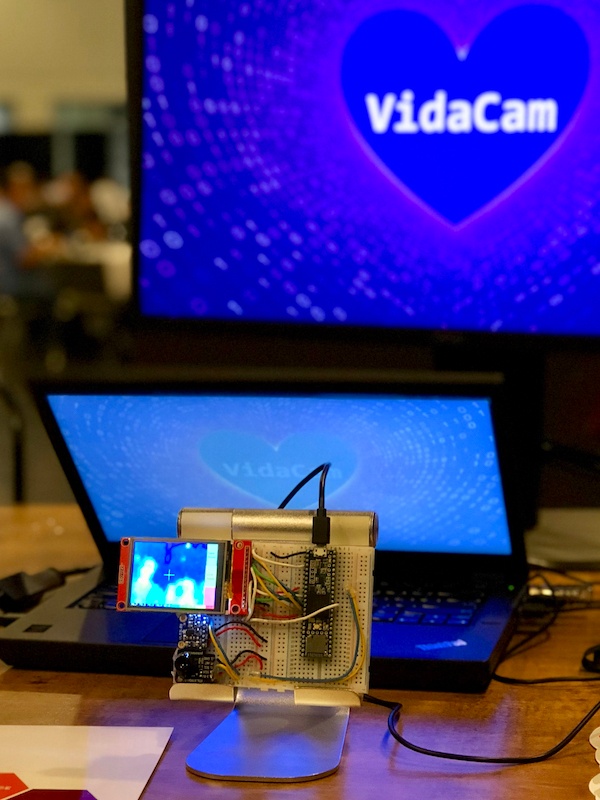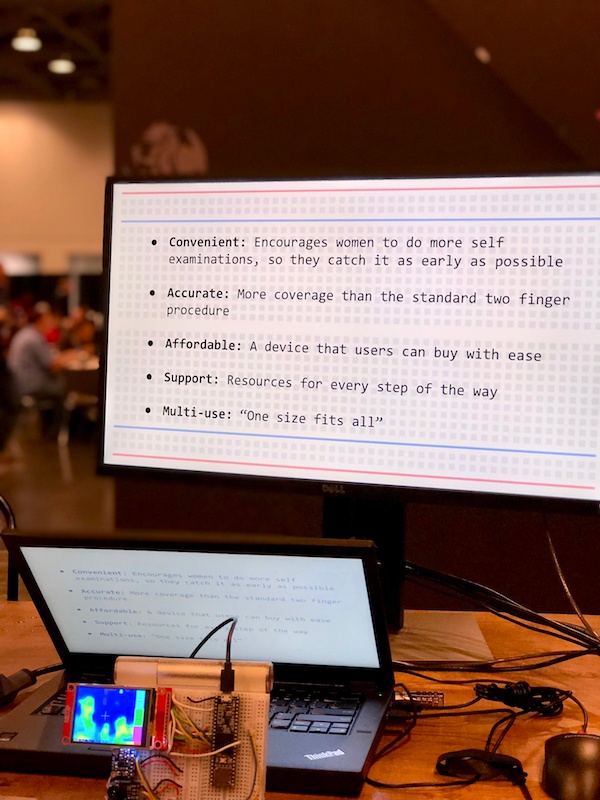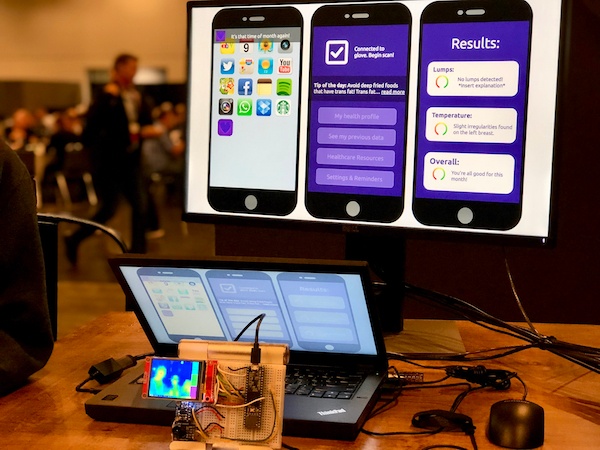By the end of my conversation with Lauren and Yohana, I was overwhelmed -- by the prototype they had developed, the motivation behind it, and they way each of them were able to bring a salient sense of empathy to everything they do. Here's what these two high school students taught me about empathy. A Different Approach to Learning Design Tech High School Design Tech High School -- often better known as d.tech -- isn't exactly a "typical" institution. One such prototype was Vida Cam, Lauren and Yohana's project: an in-home thermal imaging camera that was developed to aid early detection of breast cancer -- which has been found to lead to a higher survival rate. The Vida Cam can pick that up, and also allows users to compare thermal images over time. The Design Thinking Process First coined at Stanford University, Design Thinking is defined as "a methodology for creative problem solving." A visual representation of the Design Thinking process, alongside the Vida Cam prototype In other words, writes one group of Stanford University academics, "The Design Thinking process first defines the problem and then implements the solutions, always with the needs of the user demographic at the core of concept development." But what's the correlation between empathy and truly remarkable designs, solutions, and even marketing work? And ask for Lauren and Yohana -- what do they make of this emphasis on empathy, and how do they think the rest of us can put it into practice in our work? "A lot of times, when we’re finding a solution to a problem, we forget about who we’re designing for, and we just start designing for ourselves and what we think would be the best solution.

Every once in a while, I’ll meet people who at once give me hope for the future and make me wonder what the heck I’ve done with my life.
(I mean that, of course, in the most positive way possible.)
Yesterday, I had a the privilege of meeting two such people. Lauren and Yohana, both seniors at the Design Tech High School in Redwood Shores, California, were exhibiting new technology they had developed as part of their curricula — specifically, something called an Intersession, in which students are fully dedicated to one, in-depth subject and project.
By the end of my conversation with Lauren and Yohana, I was overwhelmed — by the prototype they had developed, the motivation behind it, and they way each of them were able to bring a salient sense of empathy to everything they do.
We can all learn something from the two of them, I realized — marketers included. Here’s what these two high school students taught me about empathy.
A Different Approach to Learning
Design Tech High School
Design Tech High School — often better known as d.tech — isn’t exactly a “typical” institution. It’s a public charter high school located on the campus of enterprise tech company Oracle, and is a product of the company’s Educational Foundation.
That relationship with Oracle is a core part of what many of the students are able to do as part of these Intersessions, the product of which was some of the prototyped technology exhibited at yesterday’s d.tech showcase.
One such prototype was Vida Cam, Lauren and Yohana’s project: an in-home thermal imaging camera that was developed to aid early detection of breast cancer — which has been found to lead to a higher survival rate.

The Vida Cam prototype
The camera uses thermal imagery to detect heat changes, which Yohana explained could signal that a tumor might be present, as more blood flows to them, which can cause a spike in temperature. The Vida Cam can pick that up, and also allows users to compare thermal images over time.
I don’t know what you were doing when you were 17 — but I can say with certainty that, personally, I was not working on anything that carried as much impact as the Vida Cam.

At risk of “fan-girling,” I wasn’t shy about letting Lauren and Yohana know that they give me hope for the future, and was in awe of the altruism they seemed to bring to the development of this technology. What was their motivation, I asked?
As part of each Intersession project, it turns out, students are assigned a subject who presents a problem in need of a solution. Lauren and Yohana’s subject had shared the story of her sister, who was diagnosed with breast cancer, which set into motion the process of designing the Vida Cam.


COMMENTS